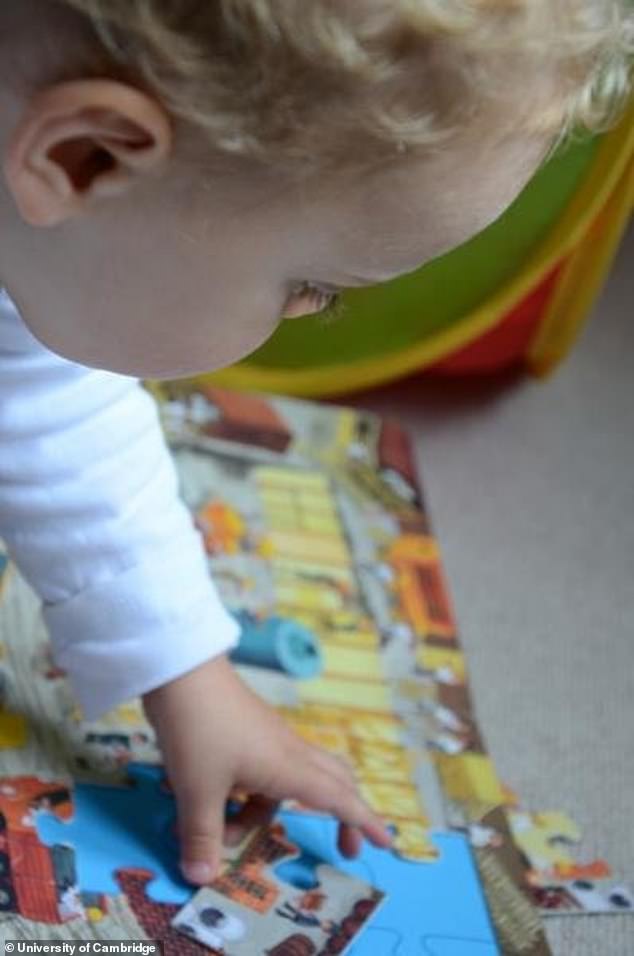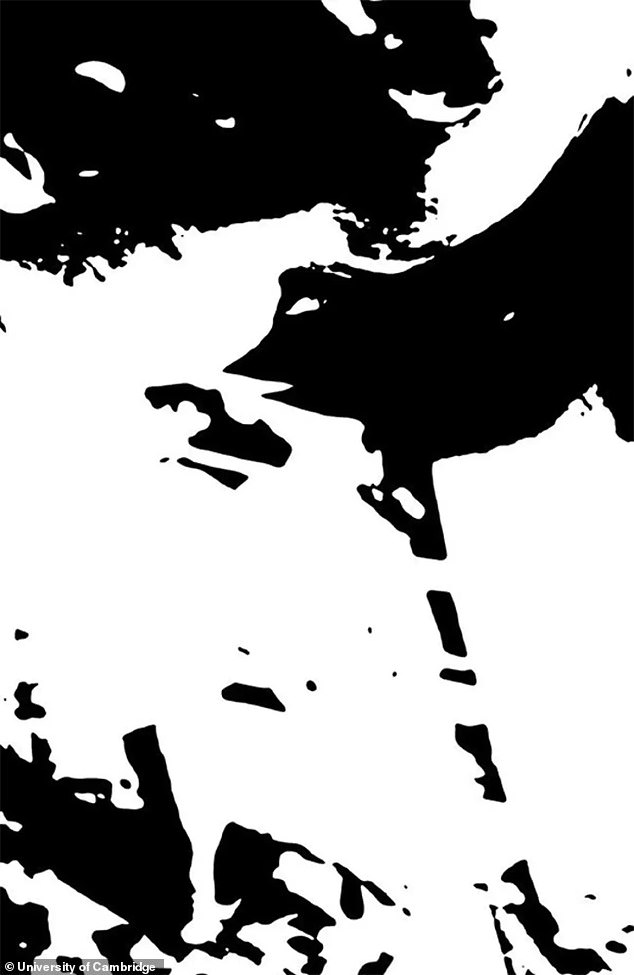Psychologists have warned that people who can identify the shape of a baby in an optical illusion may need to see a therapist.
Seeing a child in the inkblot suggests that these individuals may be prone to hallucinations and psychosis.
This is because they probably have a more predictive brain that fills in the missing images of the child’s head and body.
Experts say the process is useful: It makes us efficient and skilled at creating a coherent picture of an ambiguous and complex world, but it can also cause some people to see things that don’t really exist.
This black and white image may look like a random pattern of spots, but scroll down, look at the photo below, and look at this one again. You may begin to understand it and see a similar image of a baby. It is this ability that scientists believe could help explain why some people are prone to hallucinations.
Psychosis is defined as a loss of control of reality. It is a condition characterized by delusional thoughts, hallucinations (both auditory and visual), and irrational beliefs.
The inkblot was developed by UK psychologists to explore how the brain’s processing of visual information differs between people with early psychosis, people prone to psychosis and healthy people.
The scientists’ report included two separate studies.
The first examined whether psychotic experiences, such as hallucinations and delusions, are the result of overreliance on prior knowledge when processing unclear sensory cues.
And the second looked healthy individuals who showed traits related to schizotypy, which is a personality trait that can predict psychosis and other mental illnesses.
While schizotypy was originally thought to indicate a risk for schizophrenia, it is now understood as a broader indicator of psychosis proneness.
34 people participated in the initial report, including 16 healthy volunteers and 18 considered at risk for psychosis. The two were matched for age and IQ.
The first study involved 34 people, including 16 healthy volunteers and 18 considered at risk for psychosis. The two were matched for age and IQ.
In the second study, the researchers examined 40 healthy people recruited from the surrounding community.
Both groups looked at 500 bicolor black and white images that were selected for their difficulty in interpreting without prior knowledge of what they might be.
Once the image was shown in light color, the researchers looked at how quickly each person could recognize the shape in the black and white photograph.
The study found that individuals in the clinical group, those with early psychotic experiences, improved their shape recognition after viewing images of templates compared to healthy controls.
Specifically, the clinical group showed an average increase in performance by a measure of 0.35 after viewing the templates, while the control group improved by a measure of 0.14.

Scientists believe that hallucinations may be caused by a natural process used by the brain to make sense of the world and that most of us experience them at one time or another. Shown is an image of a baby, shown in the blotchy black and white image above. The pair is similar to those used in the study.
This suggests that individuals in the clinical group used prior knowledge better to recognize the shapes, although both groups improved overall.
The researchers were able to understand how information processing changes as the first symptoms of psychosis emerge.
Studies indicate that both early psychosis and psychosis proneness are associated with a change in visual processing, where individuals tend to rely more on their prior knowledge than on new sensory information.
The results suggested that people with a condition that already puts them at risk of developing hallucinations and delusions experience a change in processing.
That reveals a distinct cognitive trait that may contribute to the development of psychotic symptoms.
The researchers said: “Given that these alterations in information processing are evident in the early stages of psychosis and even in association with subtle perceptual changes that indicate psychosis-proneness, they may be important factors contributing to the onset of illness.” mental illness”.
His report appeared in the magazine. PNAS.
They identified unmedicated people who were experiencing early psychotic symptoms and who did not meet the criteria for a formal diagnosis through a specialist mental health service.
Their observations indicated that, in cases of early psychosis, there is a change in the way information is processed, prioritizing prior knowledge rather than relying on new sensory stimuli.
To effectively navigate our environment, we need precise details about the object’s size, location, and distance. But we do not have direct access to this information; instead, we rely on sensory information, which can be difficult to discern.
The human visual system compensates by integrating sensory data with our prior knowledge to form a more accurate understanding of the world.
This is known as top-down processing, where existing knowledge shapes how we interpret incoming sensory information.
For example, if you see ‘The cat sat on the rug’, your brain recognizes the context and automatically fills in the missing letter to read ‘The cat sat on the rug’, even though the sensory information (the text) is incomplete.
The brain uses its knowledge of language and sentence structure to interpret unclear information.
One of the study’s researchers, Dr Christoph Teufel from Cardiff University’s School of Psychology, said: “Vision is a constructive process – in other words, our brain creates the world we ‘see’.
“It fills in the blanks, ignoring the things that don’t quite fit, and presents us with a picture of the world that has been edited and made to fit what we expect.”

